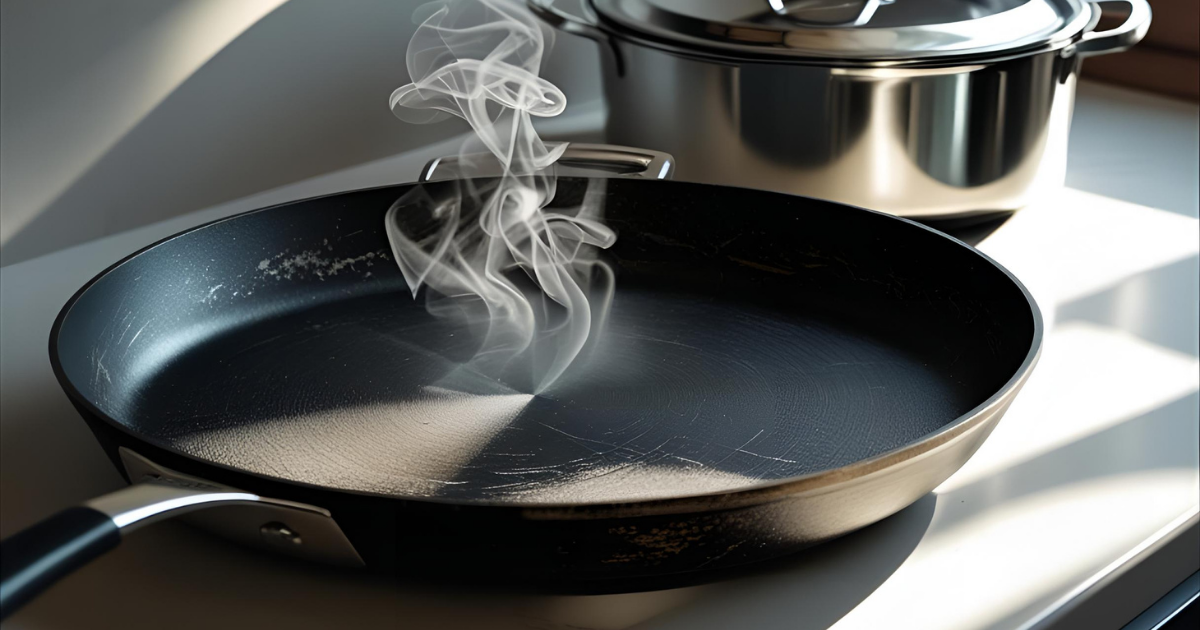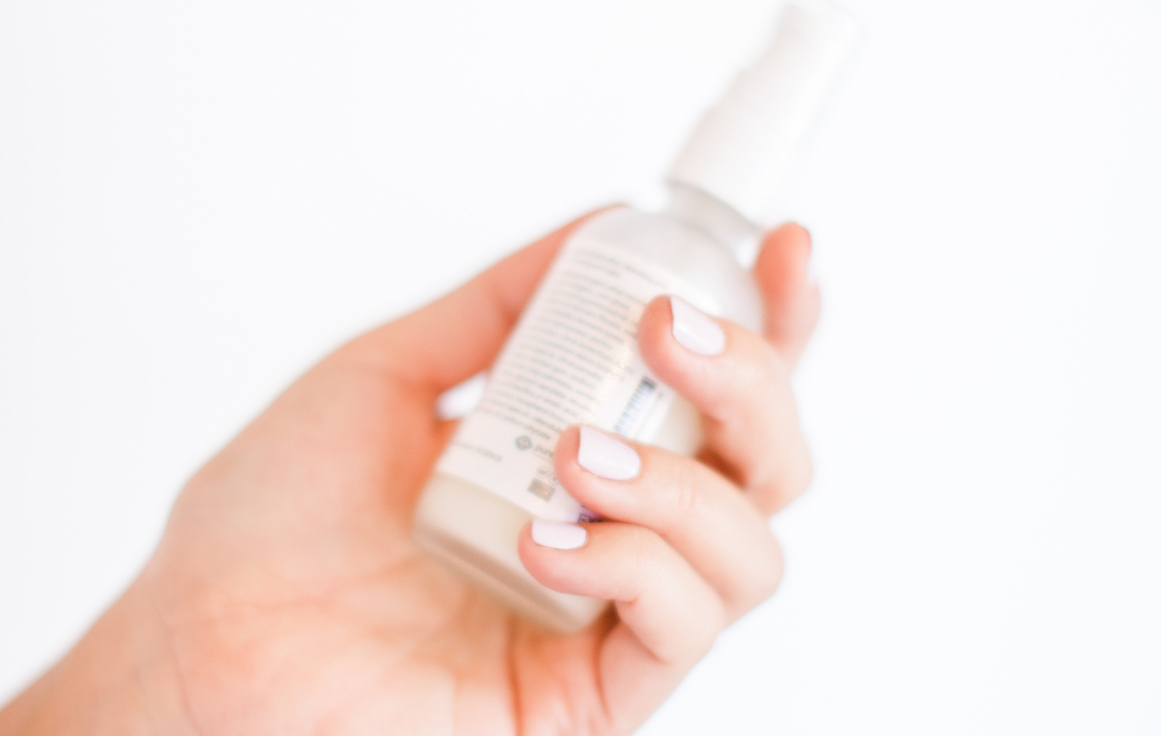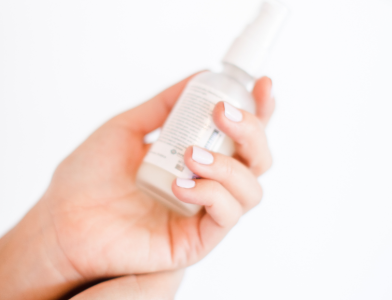When it comes to preparing healthy, home-cooked meals, most of us want to choose kitchen tools that are both convenient and safe. But if you’re reaching for a non-stick pan, air fryer, or rice cooker, you could unknowingly be serving up more than just dinner – potentially toxic chemicals called PFAS, or “forever chemicals,” may be making their way into your food.
Let’s explore the facts behind non-stick cookware, the risks of PFAS exposure, and practical, science-backed swaps to protect your family’s health.
Understanding PFAS: What Are Forever Chemicals?
PFAS, or per- and polyfluoroalkyl substances, are a massive class of nearly 15,000 synthetic chemicals. Originally developed for industrial and military applications, PFAS entered kitchens when Teflon (PTFE) was introduced in the 1950s. The trouble? These chemicals are notoriously persistent – they don’t break down easily and can accumulate in your body over time.
- Hormone Disruption: PFAS can interfere with hormone function, impacting everything from fertility to metabolism.
- Cancer Risk: Studies have linked PFAS exposure to kidney and testicular cancers.
- Immune Suppression: Even low doses may weaken immune response, especially in children.
Why PFOA-Free Doesn’t Mean Safe
Many non-stick pans are advertised as “PFOA-free,” leading consumers to believe they’re safe. However, PFOA is just one PFAS compound used in the production of PTFE. When PFOA was phased out, manufacturers substituted similar chemicals like GenX, which carry many of the same toxic risks.
What’s more, both new and used non-stick pans have been shown to leach PTFE into food, regardless of whether they are scratched. When scratched or overheated (even at temperatures easily reached during regular cooking), these pans can emit fumes and release even more particles – a process known to cause “polymer fume fever” or “Teflon flu.” For sensitive groups, pets, and especially birds, these fumes can be particularly dangerous and even fatal.
The Hidden Health Impacts of PFAS Exposure
Recent research continues to spotlight the effects of PFAS exposure:
- Endocrine Disruption: PFAS can disturb reproductive hormone levels, impacting menstrual cycles and fertility in both men and women.
- Developmental Risks: Elevated PFAS levels in children are linked to asthma, developmental delays, and metabolic disruptions.
- Obesity in Children: Studies now show a correlation between PFAS exposure and increased obesity risk.
Even “regrettable substitution” – switching out one PFAS chemical for another less-known variety—does not necessarily reduce your risk.
Empowering Safe Choices: Low-Tox Cookware Alternatives
Awareness is power, not panic. You don’t need to overhaul your whole kitchen overnight or spend a fortune. Start by replacing your most-used pan with a safer, evidence-supported option:
- Cast Iron: Naturally non-stick when seasoned, chemical-free, and adds beneficial iron to meals. Pre-seasoned pans can often be found secondhand at great prices.
- Stainless Steel: Durable, versatile, and completely non-toxic. Perfect for sautéing, browning, and deglazing – just remember to preheat and use oil.
- Pure Ceramic: Not to be confused with ceramic-coated pans; true ceramic cookware is made from fired ceramic and has been rigorously tested to exceed California Prop 65 standards for lead and cadmium.
Making the Transition Affordable & Stress-Free
Swapping your cookware doesn’t have to break the bank:
- Start by replacing your most-used pan first.
- Shop secondhand for cast iron or stainless steel at significantly lower prices.
- Look out for sales from reputable brands around holidays.
Remember, this is about progress, not perfection. By becoming informed and making even one mindful choice, you’re already taking a significant step toward reducing your family’s exposure to toxins.
Take Control of Your Kitchen’s Health
While non-stick cookware may offer convenience, the science is clear: regular use, especially when pans are scratched or overheated, can introduce harmful PFAS into your body. Understanding what’s really behind the labels and marketing empowers you to make safer choices – one pan at a time.
Ready for more science-backed steps to lower toxins at home? Explore additional resources and low-tox swaps to continue your journey toward a healthier, safer kitchen.
Dr. Yvonne Approved Cookware
Links provided on this page are affiliate links, which means if you click on it and make a purchase I may earn commission. The commission comes at no cost to you and allows me to continue my research. Note- I only recommend products that I personally use and trust. I will always disclose whether a link is an affiliate link, and never recommend products solely for the purpose of commission.
References
- Botelho JC, Kato K, Wong LY, Calafat AM. Per- and polyfluoroalkyl substances (PFAS) exposure in the U.S. population: NHANES 1999-March 2020. Environ Res. 2025 Apr 1;270:120916. doi: 10.1016/j.envres.2025.120916. Epub 2025 Jan 21. PMID: 39848516; PMCID: PMC12082571.
- Liew Z, Goudarzi H, Oulhote Y. Developmental Exposures to Perfluoroalkyl Substances (PFASs): An Update of Associated Health Outcomes. Curr Environ Health Rep. 2018 Mar;5(1):1-19. doi: 10.1007/s40572-018-0173-4. PMID: 29556975; PMCID: PMC6348874.
- Bline AP, DeWitt JC, Kwiatkowski CF, Pelch KE, Reade A, Varshavsky JR. Public Health Risks of PFAS-Related Immunotoxicity Are Real. Curr Environ Health Rep. 2024 Jun;11(2):118-127. doi: 10.1007/s40572-024-00441-y. Epub 2024 Mar 25. PMID: 38526771; PMCID: PMC11081924.
- Seyyedsalehi MS, Boffetta P. Per- and Poly-fluoroalkyl Substances (PFAS) Exposure and Risk of Kidney, Liver, and Testicular Cancers: A Systematic Review and Meta-Analysis. Med Lav. 2023 Oct 24;114(5):e2023040. doi: 10.23749/mdl.v114i5.15065. PMID: 37878255; PMCID: PMC10627102.
- Coperchini F, Croce L, Ricci G, Magri F, Rotondi M, Imbriani M, Chiovato L. Thyroid Disrupting Effects of Old and New Generation PFAS. Front Endocrinol (Lausanne). 2021 Jan 19;11:612320. doi: 10.3389/fendo.2020.612320. PMID: 33542707; PMCID: PMC7851056.
- Rickard BP, Rizvi I, Fenton SE. Per- and poly-fluoroalkyl substances (PFAS) and female reproductive outcomes: PFAS elimination, endocrine-mediated effects, and disease. Toxicology. 2022 Jan 15;465:153031. doi: 10.1016/j.tox.2021.153031. Epub 2021 Nov 10. PMID: 34774661; PMCID: PMC8743032.
- Luo Y, Gibson CT, Chuah C, Tang Y, Naidu R, Fang C. Raman imaging for the identification of Teflon microplastics and nanoplastics released from non-stick cookware. Sci Total Environ. 2022 Dec 10;851(Pt 2):158293. doi: 10.1016/j.scitotenv.2022.158293. Epub 2022 Aug 27. PMID: 36030853.
- Cole M, Gomiero A, Jaén-Gil A, Haave M, Lusher A. Microplastic and PTFE contamination of food from cookware. Sci Total Environ. 2024 Jun 15;929:172577. doi: 10.1016/j.scitotenv.2024.172577. Epub 2024 Apr 18. PMID: 38641111.
- Correia MS, Horowitz BZ. Polymer Fume Fever. [Updated 2023 Aug 4]. In: StatPearls [Internet]. Treasure Island (FL): StatPearls Publishing; 2025 Jan-. Available from: https://www.ncbi.nlm.nih.gov/books/NBK594276/
- Wolf N, Müller L, Enge S, Ungethüm T, Simat TJ. Analysis of PFAS and further VOC from fluoropolymer-coated cookware by thermal desorption-gas chromatography-mass spectrometry (TD-GC-MS). Food Addit Contam Part A Chem Anal Control Expo Risk Assess. 2024 Dec;41(12):1663-1678. doi: 10.1080/19440049.2024.2406007. Epub 2024 Sep 23. PMID: 39311776.
- Li L, Guo Y, Ma S, Wen H, Li Y, Qiao J. Association between exposure to per- and perfluoroalkyl substances (PFAS) and reproductive hormones in human: A systematic review and meta-analysis. Environ Res. 2024 Jan 15;241:117553. doi: 10.1016/j.envres.2023.117553. Epub 2023 Nov 4. PMID: 37931739.
- Robarts DR, Venneman KK, Gunewardena S, Apte U. GenX induces fibroinflammatory gene expression in primary human hepatocytes. Toxicology. 2022 Jul;477:153259. doi: 10.1016/j.tox.2022.153259. Epub 2022 Jul 15. PMID: 35850385; PMCID: PMC9741548.



